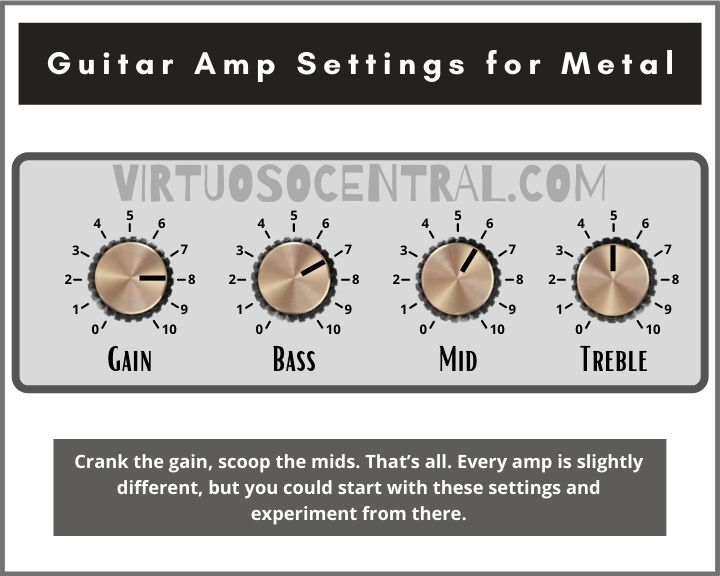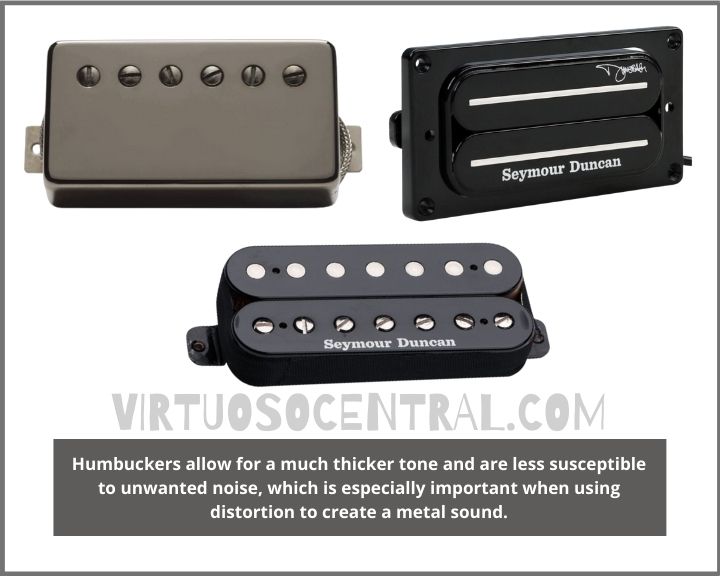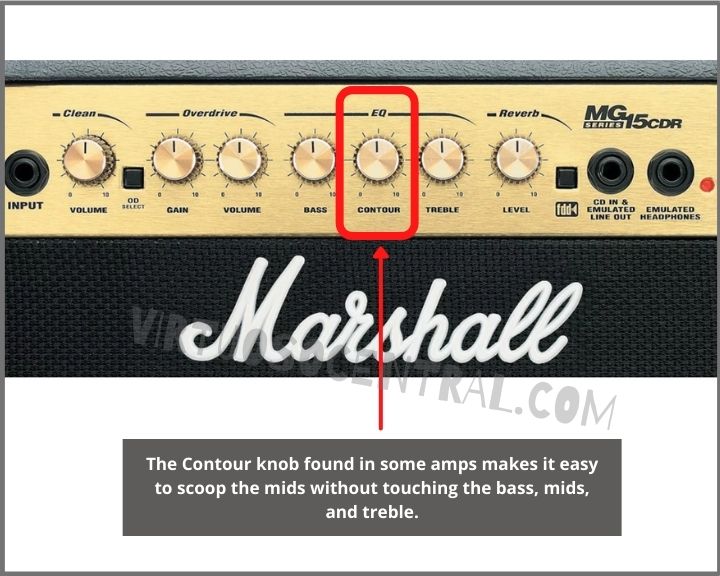Chances are, if you’ve landed on this page, you’ve tried cranking up your amp to 11 and have not been able to recreate the tone of your favorite metal guitarists. Don’t worry. It happens to the best of us, and learning your way around amp EQ can be more complicated than it seems at first.
Before you even get to the amp, there are many other things to consider. Yet, even with a less-than-ideal setup, you can still optimize your tone with the onboard EQ of your amplifier. So, without further ado, let’s dive into the best guitar amp settings for metal and everything else you need to get the perfect tone from your amp.
Amp Settings for Metal – General Settings
Crank the gain, scoop the mids. That’s all. Every amp is slightly different, but you could start with these settings and experiment from there:
- Gain or Drive: 8+
- Bass: 7+
- Mids: 2-6
- Treble: 5+
The more distortion you want, the higher you should pump the gain. If your amp has presence or resonance settings, you can experiment with cranking these too to see if you like their impact. They alter the very top and lowest possible frequencies, respectively.
It’s best to listen with them cranked and the gain pulled back a little first to make it easier to hear how they impact the tone. Then, you can pull them back to a more respectable level as you boost the gain.
Before we get too carried away with how each setting impacts your tone, let’s take a quick look at what else can help you improve your sound.

Optimizing Your Gear
Yes, EQ can help you get a better metal tone. But, it’s not the only thing you’ll need. Ideally, you should have an amp designed for high-gain applications. If the amp is not ideal, you could get a quality overdrive and/or distortion pedal.
The Right Guitar
Typical metal guitars include classics like the ESP Eclipse and B.C Rich guitars, but a Gibson Les Paul can be just as good at creating a soaring metal tone. What do these guitars all have in common? Humbucking pickups.
Humbuckers allow for a much thicker tone and are less susceptible to unwanted noise, which is especially important when using distortion. And, you can’t have a metal tone without distortion.
Many people argue that active pickups (humbuckers) are much better for metal too. They’re often referred to as “hot pickups,” which means they provide a stronger electrical signal to the amp and react better to high gain EQ settings.

Choosing an Appropriate Amplifier
We could argue for days about whether tube amps or solid-state amps are better. But, the consensus is that tube amps provide a richer and more natural tone. They also offer a more natural overdrive if the preamp tube can be powered appropriately. Some of the most influential metal amps on the market are:
- Peavey 6505
- Mesa Boogie Triple Rectifier
- ENGL Powerball II
However, plenty of solid-state amps on the market do a great job of pumping out metal. A good example is the Randall RG series.
You could also opt for modeling amps like a Boss Katana or Positive Grid Spark. They’re perfect genre-spanning amps as they copy the tone of different types of amps. The latter is only good as a practice amp, so be wary of that if you intend to play gigs.
Generally speaking, a two-channel amp with a dedicated overdrive channel is the best option when you’re looking to play metal. They also have the apparent advantage of switching to a clean channel for certain sections of music. This is prevalent in many types of metal, such as thrash metal like Metallica through to melodic djent.
Yet, even if you have a $30 practice amp, you can still optimize it for metal tone. Follow the quick settings under the first subheading and read on below to improve your sound.
If Your Amp Doesn’t Cut It
We can’t always afford the best gear and have to work with what we have. Unfortunately, The distortion channel on most budget amplifiers is absolute garbage. Adding a cheap distortion pedal can be a good band-aid for this situation.
Some of the cheapest options on the market replicate the industry standards. An Ibanez Tube Screamer is an obvious choice if you can afford it. Yet, something like a Behringer UM300 Ultra Metal can be the perfect interim while you save for a more appropriate amp.
Altering the Guitar Amp Settings for Metal
The recommended settings we gave you earlier should get you into the right ballpark. But, sometimes something isn’t quite right, so now we’re going to look at how each setting impacts the tone of your amp so you can dial in the perfect tone on your amp.
Gain Amp Settings for Metal
The gain knob controls how “hot” the signal is through the rest of the amp. The higher its set, the more natural distortion you’ll achieve. So, if your amp sounds too muddy, dial it back a bit. Feel free to pump it up if you’re after a bit more sustain and volume.
Some amps also have a “drive” knob alongside the gain. This is generally only for tube amps, as one controls the signal running through the preamp tube while the other interacts with the amp tube.
Bass
You need to inflate the bass frequencies to create a good metal tone, as it allows for the solid wall of chug when you palm mute. As you can imagine, this is especially important for the rhythm guitarists in a metal band.
A common mistake is to boost the bass a little too much. This leaves you with a muddy mess of almost unidentifiable notes. This is especially true if you’re down-tuned and not using a baritone guitar.
Floppy strings + too much bass = bad tone
Mids
Most metal artists scoop the mids on their amps (some passionately disagree). But why? Well, the answer lies in the palm mutes again. Scooped mids allow those chugs to come through clean and clear. It gives your tone the perfect crunch.
If you’re the lead guitarist in your band, you may want to consider boosting the mids instead. This is because the sonic range is more available if your other guitarist has their mids turned down. Thus, your guitar cuts through without having to introduce overbearing volume.
If you sound a little thin with your mids set below 5, raise them slowly until you’re happy with how it sounds.
Some amps make it easy to scoop the mids without touching the bass, mids, and treble. These amps have a knob marked contour. Dialing it back will automatically lower the mids while also raising the treble and bass. Make sure the other knobs are set to 12 O’clock if you want to use the contour control as a shortcut.

Treble
Generally speaking, the lead guitarist should have their treble a little higher than the rhythm guitarist, so their solos and lead lines cut through. The treble often gives amps with heavy gain a little clarity. Although with a slightly raised risk of feedback, especially if your gain is cranked too high.
On The Mixing Desk
You should consider a few things if you’re micing up metal guitarists to a mixer:
Boost the mids: Though scooped mids are ideal for metal, they can often sound thin when paired with PA speakers. You may have to counteract their default amp settings a little.
Cut Some Bass: The same applies for the low end. The down-tuned guitars used in metal can work their way into the subs and drown out the bass guitar with a muddy mess of chugged notes.
More To Learn
If you found this article useful, check out our other guitar EQ guides